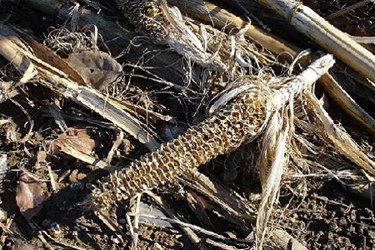A New Processing Technique Is Turning Agricultural Refuse Into Food
By Isaac Fletcher, contributing writer, Food Online

Biorefineries could one day break down coarse, inedible cellulose into edible starches through a newly developed, cost-effective process
Virginia Tech professor Y.H. Percival Zhang has developed a process that transforms wood chips, corn stems, and other agricultural refuse into edible starches. According to Zhang, restaurants will serve this refuse the same way they serve French fries and mashed potatoes. Although he has not yet found investors for the project, Zhang hopes to one day process the refuse in a facility much like a giant brewery.
All plants consist of cellulose, the substance that makes up plant cell walls. In its raw form, cellulose is coarse, difficult for the human body to digest, and serves the human body little nutritional value. Zhang’s process, however, capitalizes on the fact that cellulose has the same chemical formula as starch. Both are polysaccharides, meaning their molecules are chains of sugars. The difference is in their chemical bonds. Both may be made of sugars, but use different linkages between the glucose units.
Edible starches, like potatoes, consist of glucose units joined by links that called alpha bonds. During digestion of these starches, humans produce an enzyme called amylase, which breaks the bond, turning the starches into sugars. Inedible starches, on the other hand, have glucose units joined by different links that are called beta bonds, which can be broken down by the enzyme cellulase — an enzyme that humans do not produce. This is where Zhang’s process comes into play.
The process has been developed to restructure the bonds to convert beta bonds into alpha bonds. This means the process turns the coarse cellulose into a soft powdery substance like corn starch. The process functions like a human stomach, using various enzymes, one after one, to break down food. When the cellulose is broken down, it creates amylose, which looks and tastes just like regular starch. Zhang says that there are not yet any recipes for cooking amylose, but there will be.
The process will be performed in an industrial bioreactor, which would look like a typical brewery vat used to ferment beer. But instead of grain, it would use a mix of corn stalks, leaves, weeds, and grasses — called corn stover — and mix in enzymes instead of yeast. Zhang estimates that production costs would be very low since enzymes are cheap and reusable and agricultural refuse is plentiful. In addition to amylose, the reaction also produces ethanol, which can be used as a biofuel.
How can your company improve its mixing efficiencies?
With cellulose being the world’s most abundant carbohydrate, the process has the potential to address world hunger. Plants produce about 40 times more cellulose than edible starch, the majority of which is wasted. According to a recent study by Zhang and his colleagues, “every ton of cereals harvested is usually accompanied by the production of two to three tons of cellulose-rich crop residues, most of which are burned or wasted rather than used for cellulosic biorefineries.” Not only does the process create an abundance of cheap food, but the amylose is also healthier than other starches since it breaks down slowly in the digestive tract. If investors can be found to build the biorefineries, production of amylose could drastically change the way we look at food — and what was previously considered to be just refuse.
